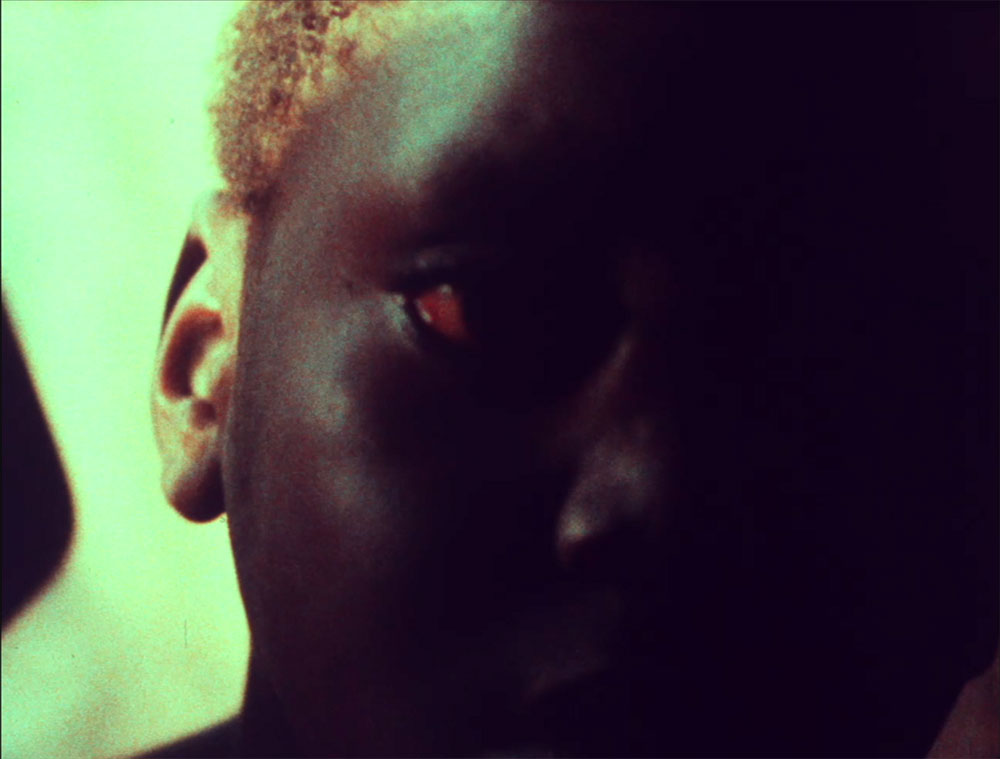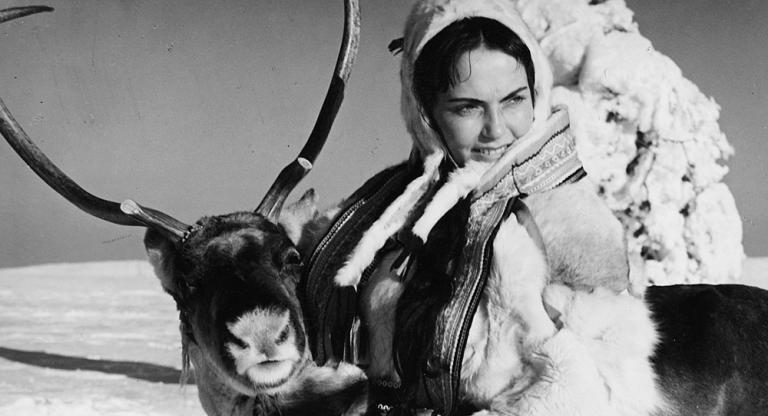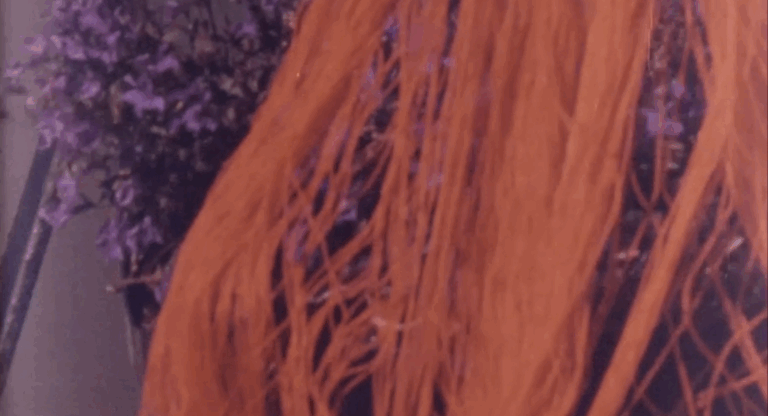Questions of memory and remembrance are part-and-parcel of Larry Gottheim’s cinema. His early films predominantly rely on minimalist shot compositions that emphasize the time spent watching them. For example, Blues (1970) and Harmonica (1971), both 10ish-minute films that fixate on ultra-specific visual subjects—a bowl of blueberries and harmonica player, respectively—each invite the viewer to dwell on their own thoughts as they observe these particular scenarios play out. It’s not so much what the films mean, but what they invoke in the viewer. To me, Harmonica feels like a visualization of the process of making music, while Blues invites me to think about the nature of counting. But Gottheim eventually distanced himself from this mode of filmmaking, instead pursuing work premised on dissonance. The films he made in Haiti and the Dominican Republic challenge formal and narrative conventions in new ways to create what he calls “anti-documentaries.”
Machete Gillette… Mama (1989) depicts a journey through the Dominican Republic and Haitian border communities, with notable focus on sugar worker communities, bateyes, and ceremonial Vodou practices. It portrays Dominican and Haitian people eating and cooking, kissing and playing, working and doing chores. A narrator, scripted by Gottheim and voiced by Dominican local Bernardo Román, says, “These images are mine, they are their images.” Gottheim’s images aren’t ogling glances of folks, as there’s a measurable playfulness and willingness from the locals to be in front of the camera. This stems from the fact that Dominicans lacked a cinematic image of themselves from the 20th century, largely because of Rafael Trujillo’s dictatorship, which started in 1930 and lasted until 1961, when he was assassinated by US-backed revolutionaries. Gottheim’s seeming diary film solicits a greater memory-making project apropos of the Dominican and Haitian diaspora. His sporadic editing, asynchronous sound, and hazy camerawork doesn’t limit the film to a single interpretation. Instead, the 40-minute Machete Gillette feels like a conversation between Gottheim’s camera and those whose overlooked moments are vividly shown on screen.
Gottheim began filming Chants and Dances for Hand in 1991, but did not complete the film until 2017. He’s said that it took him over 20 years to distance himself from the material before dealing with the footage. In Chants and Dances for Hand, Gottheim takes part in various Vodou ceremonies, some involving esoteric sermons and others animal sacrifice. Throughout, we see onlookers observing him. These moments are interwoven with scenes of moviegoing and late night conversations, juxtaposed further with extraordinary festive dancing and mass protests. An image of a burned corpse recurs throughout the film, nothing to distinguish it as animal or human. That is, until the film’s middle section, titled “UP RISING”, contextualizes the corpse as the charred body of a person caught up in an attempted coup d'état led by Roger Lafontant. Even amid that violence, ceremonial practices persist: a houngan plays a chanting drum and someone eats a part of the charred flesh as sacred duty to please the Lwas. Most striking of this shot is the distortion that crops the video in half, resulting from the high temperature’s effect on the Hi-8 tape Gottheim used. It’s a serendipitous moment that stresses the various metaphorical and literal borders—political, geographical, spiritual, physical—that have been crossed throughout the film.
Chants and Dance for Hand and Machete Gillette… Mama are both films marked by decay—crudely-drawn title cards, extremely short shots, distorted visual quality—that represent the fragmentation of remembering. In Gottheim’s films, memory isn’t a given, it’s an active process that must be built piece-by-piece. These films carry a heightened intimacy that calls for repeated viewings to further refine their obscured meanings.
Machete Gillette... Mama + Chants and Dances for Hand screen this evening, May 22, and on May 25, at the Museum of Modern Art as part of the series “The Red Thread: Larry Gottheim’s Films.”



